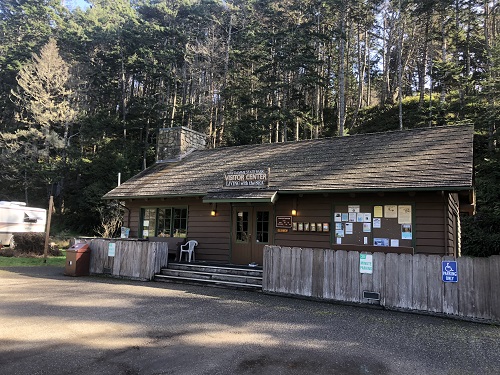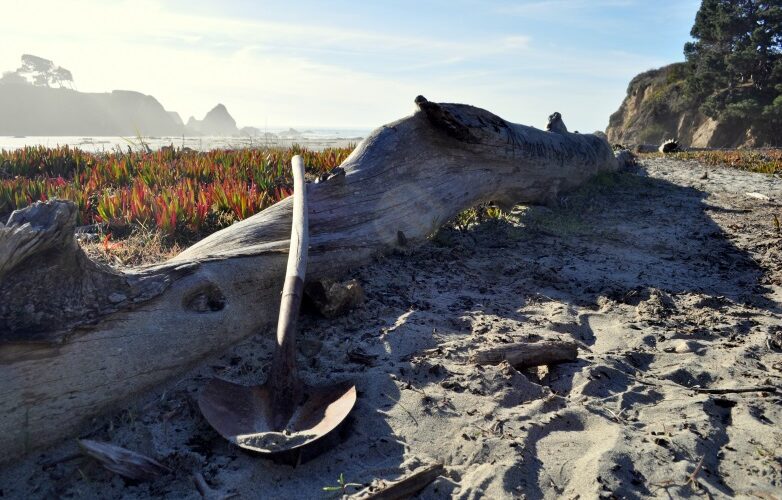Van Damme State Park
AMENITIES
This 1,831-acre park offers a variety of attractions for hikers, divers, and campers. The free day-use beach offers a stunning spot for whale watching, picnics, kayaking, and diving. Van Damme Beach is next to a protected cove, making it popular with kayakers, snorkelers and divers. Here you can find kelp forests, red abalone, sea stars, sea urchins, and nearshore fish. Or you can set up a beach chair and watch for harbor seals or gray whales. RV camping is allowed in the beach parking lot, but there is no overnight camping permitted on the beach.
If you are looking for a hike through shaded redwoods and a green canyon, Van Damme’s Fern Canyon Trail is the perfect day hike. This 9-mile round trip trail follows Little River and climbs the hill to the unusual Van Damme pygmy forest boardwalk trail. The pygmy forest features 6-foot tall trees that are hundreds of years old. The limited nutrients in the soil, paired with a hardpan layer only a foot under the surface, has stunted the growth of these ancient trees.
Click here for info about ADA accessibility via Access Northern California.
Van Damme State Park has one of the largest campgrounds on the Northern California Coast. Camping in this park is popular in summer and reservations should be made in advance. Visit ReserveCalifornia.com to book a campsite.
Download the State Park Map of Van Damme here
Trail Ecology
For millions of years, the shifting tectonic plates under the ocean have been pushing up layers of soil and sedimentary rock forming the iconic cliffs and mountains on the Mendocino Coast. There are five distinct layers, or terraces, on the coast. The farther the terrace from the ocean, the older it is. The oldest terrace, the fifth, is estimated to be 500,000 years old. Each terrace, as it is formed under the ocean, accrues a variety of different nutrients. After the terrace is pushed above the surface of the ocean, it retains these unique nutrients. Because different forms of ecological life require different nutrients, the plant life on each terrace is distinct from the life found on another terrace.
The pygmy forest in Van Damme State Park is the product of the ancient movements of tectonic plates. The soil in the pygmy forest is nutrient deprived because the marine terrace is flat and poorly drained. The flatness of the area does not allow for much erosion to take place. Rain continuously floods the area, washing away nutrients without taking any of the soil with it. After thousands of years of nutrient leaching, the soil remaining in the area is highly acidic. This acidic soil stunts the growth of all plant life in the area, and the continuous rain and flooding removes oxygen from the roots of the trees. Beyond all these hindrances to life, vegetation continues to thrive. They grow slowly, but steadily for hundreds of years.
In the Van Damme pygmy forest, there is a handicap accessible boardwalk. All visitors should use this boardwalk because of the highly sensitive nature of the forest. Each plant fights to survive on a daily basis, and walking on the soil can cause irreparable damage to the roots beneath.










 DOWNLOAD MAP
DOWNLOAD MAP  OPEN IN GOOGLE MAPS
OPEN IN GOOGLE MAPS


